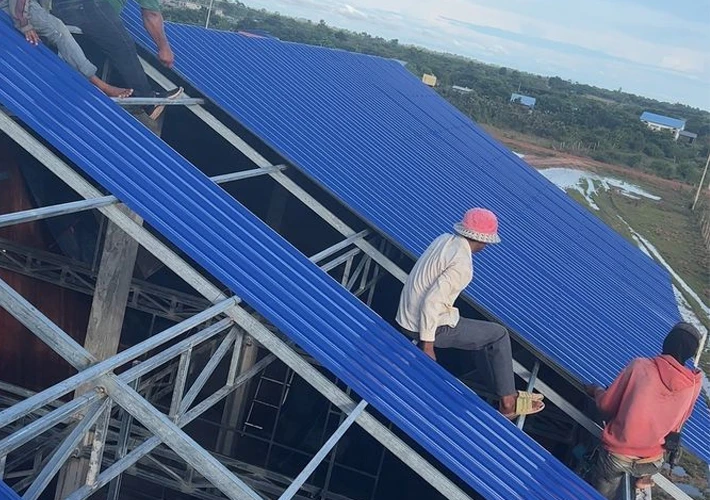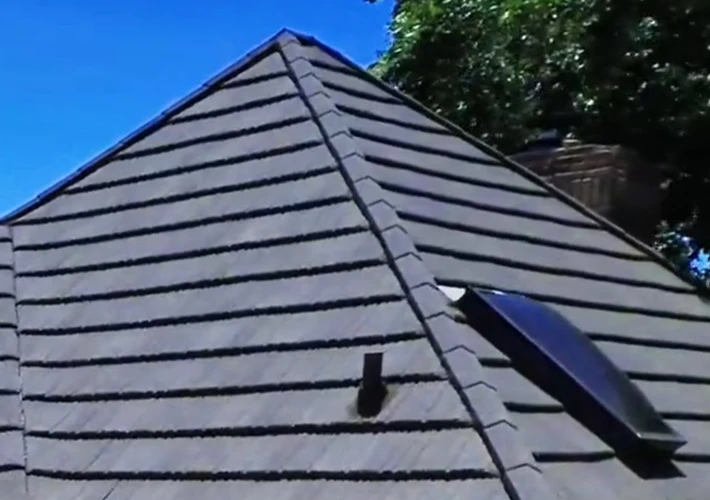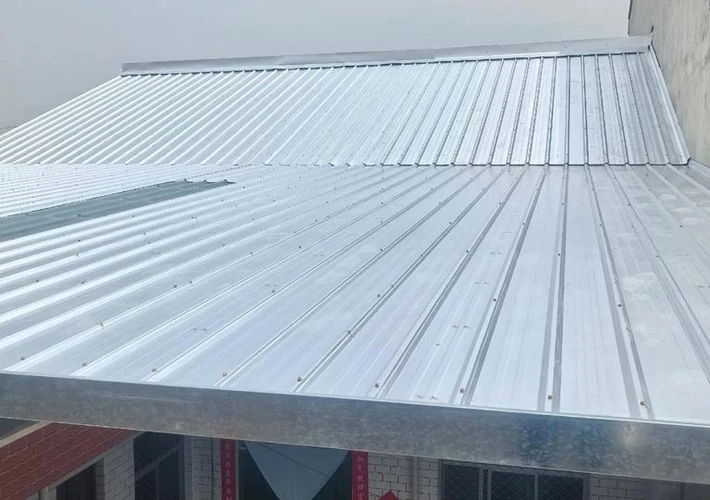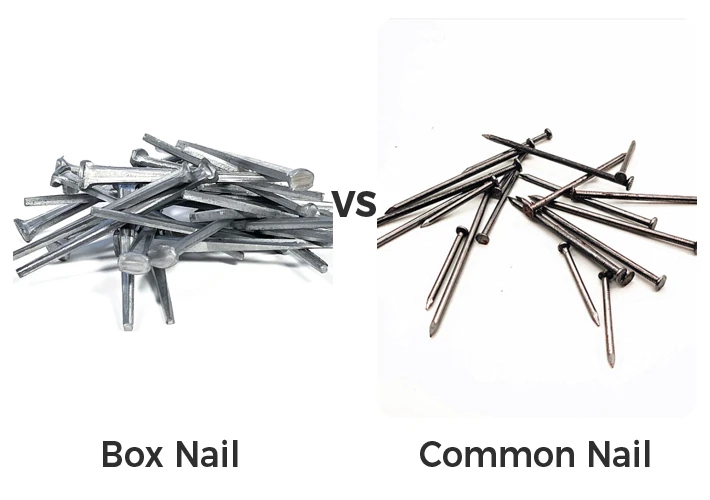Introduction
In the field of modern construction and roofing, the choice of roofing materials is no longer limited to traditional clay tiles, asphalt shingles, or corrugated metal sheets. With the continuous advancement of building materials technology, stone-coated roof tiles have emerged as one of the most popular roofing options in both residential and commercial projects. They combine the durability of metal roofing with the natural beauty of stone granules, providing a long-lasting, energy-efficient, and aesthetically pleasing solution.
This article provides a comprehensive analysis of the advantages of stone-coated roof tiles and explores their diverse application scenarios across different building types and environments. It also highlights why stone-coated roofing has become increasingly attractive for developers, contractors, and homeowners worldwide.
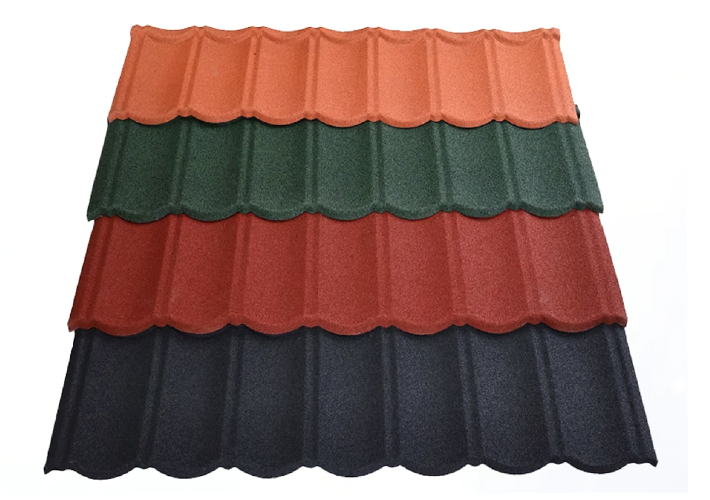
Part I: Advantages of Stone-Coated Roof Tiles
1.Outstanding Durability and Longevity
One of the biggest advantages of stone-coated roof tiles is their remarkable durability. The base is typically made of galvanized steel or aluminum-zinc alloy (GL or GI steel), which provides exceptional resistance against corrosion and rust. The surface is coated with natural stone chips, bonded with acrylic resin, adding another protective layer.
- Lifespan: Stone-coated roof tiles generally last 40–70 years, far exceeding asphalt shingles (15–20 years) or wood shakes (20–30 years).
- Weather resistance: They can withstand harsh weather conditions such as heavy rain, snow, hail, and even strong winds up to 120 mph (193 km/h).
- Corrosion resistance: The steel base layer combined with advanced coating prevents rusting, even in coastal regions with high salt content in the air.
This longevity translates into lower maintenance costs and reduced replacement frequency, making them an economical investment in the long run.
2.Lightweight Yet Strong
Compared with clay or concrete tiles, stone-coated roof tiles are significantly lighter.
- Weight: On average, they weigh around 6–7 kg per square meter, while traditional clay tiles can exceed 40 kg per square meter.
- Structural benefits: Their lightweight nature reduces the load on the building structure, eliminating the need for additional reinforcement.
- Installation efficiency: Easier handling and transportation make installation faster and reduce labor costs.
This balance of lightweight design with high strength is especially beneficial for renovation projects, where replacing old roofing materials with heavy tiles could damage the original structure.
3.Aesthetic Appeal and Versatility
Stone-coated roof tiles are designed to replicate the look of traditional roofing materials while offering superior performance.
- Variety of styles: Available in profiles such as Roman, Shingle, Classic, Milano, and Shake, each mimicking natural stone, slate, or clay tile aesthetics.
- Color range: Stone chips come in a wide spectrum of colors, allowing customization to suit different architectural designs.
- Architectural adaptability: From modern minimalist houses to traditional villas, stone-coated tiles enhance the overall appearance of the building.
This versatility in design makes them a preferred option for architects and developers who want a balance between functionality and beauty.
4.Energy Efficiency and Thermal Performance
Energy efficiency has become a key consideration in building materials, and stone-coated roof tiles contribute significantly:
- Thermal insulation: The stone coating helps to reflect sunlight while providing insulation, keeping interiors cooler in summer and warmer in winter.
- Ventilation design: Many stone-coated roofing systems incorporate airspace between the tile and roof deck, which improves airflow and reduces heat transfer.
- Energy savings: Studies show that buildings with stone-coated roof tiles can reduce cooling costs by up to 30% in hot climates.
This makes them an environmentally friendly roofing option that supports sustainable development goals.
5.Fire, Wind, and Impact Resistance
Safety is another critical factor when selecting roofing materials:
- Fire resistance: The steel core is non-combustible, and the stone coating adds another protective barrier, giving them a Class A fire rating (highest possible).
- Wind resistance: Properly installed stone-coated tiles resist strong winds and storms, making them ideal for hurricane-prone regions.
- Impact resistance: The stone surface protects the metal sheet from dents, scratches, and damage caused by hail or falling debris.
This combination of features ensures that stone-coated roof tiles provide peace of mind in disaster-prone regions.
6.Low Maintenance and Cost-Effectiveness
Unlike clay tiles that can crack or asphalt shingles that curl, stone-coated roof tiles require minimal maintenance.
- Maintenance-free: No need for frequent painting, sealing, or replacement.
- Long-term cost savings: Although the initial cost is higher than asphalt shingles, their longevity and low maintenance make them more economical over the life cycle.
- High return on investment (ROI): Many property owners report higher resale values due to the durability and aesthetic appeal of stone-coated roofs.
7.Environmentally Friendly
Sustainability is increasingly important in construction materials. Stone-coated roof tiles offer eco-friendly benefits:
- Recyclability: The steel base can be fully recycled at the end of its life.
- Energy efficiency: Reduced energy consumption lowers carbon emissions.
- Resource conservation: Unlike clay or concrete tiles, stone-coated tiles require less raw material and energy for production.
This makes them an attractive choice for environmentally conscious developers and homeowners.
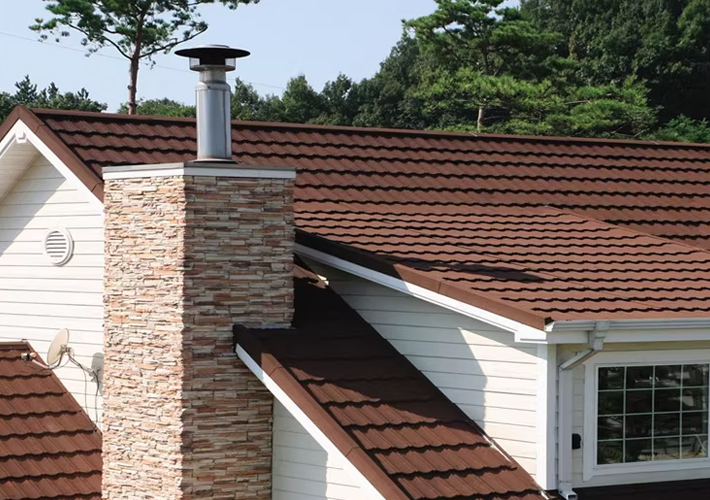
Part II: Application Scenarios of Stone-Coated Roof Tiles
1.Residential Housing
Stone-coated roof tiles are widely used in residential projects, particularly in high-end villas, townhouses, and modern suburban homes.
- Aesthetic value: Enhances curb appeal with elegant designs.
- Protection: Provides long-term protection against extreme weather, important for family safety.
- Renovations: Ideal for replacing old, heavy roofs due to their lightweight properties.
2.Commercial Buildings
Commercial projects such as office buildings, hotels, and shopping centers also benefit:
- Prestige and branding: The elegant appearance of stone-coated tiles contributes to a premium image.
- Durability: Reduces maintenance costs for large-scale properties.
- Energy efficiency: Helps businesses save on long-term operational costs.
3.Public Infrastructure
Government and institutional projects often use stone-coated roof tiles for their long lifespan and cost-effectiveness:
- Schools and universities: Provide safety, energy savings, and a pleasant environment for learning.
- Hospitals: Require fire resistance, durability, and low maintenance, all of which are met by stone-coated tiles.
- Government buildings: The aesthetic appeal combined with durability makes them a fitting choice for civic architecture.
4.Coastal and Tropical Regions
In coastal areas, traditional roofing materials often suffer from corrosion due to salty air and humidity. Stone-coated roof tiles are particularly effective here:
- Corrosion resistance: Zinc-aluminum alloy coating prevents rust.
- Wind resistance: Strong attachment methods withstand tropical storms.
- Energy efficiency: Helps regulate indoor temperatures in hot, humid climates.
5.Industrial and Agricultural Buildings
Stone-coated roof tiles are also being adopted in industrial and agricultural contexts:
- Warehouses and factories: Lightweight design reduces structural costs, while fire resistance provides safety.
- Farmhouses and barns: Their durability ensures long-term performance without constant repair.
6.Historical and Cultural Buildings
For restoration projects, stone-coated roof tiles offer modern performance while maintaining traditional aesthetics.
- Cultural heritage: Profiles like Roman or Milano tiles replicate historical appearances.
- Structural protection: Lightweight nature avoids overloading fragile historical structures.
7.International Applications
Stone-coated roof tiles are gaining popularity in global markets:
- Africa: Widely used due to their resistance to strong sunlight, heavy rains, and affordability in long-term use.
- North America: Increasing demand in hurricane-prone areas like Florida.
- Europe: Attractive for heritage-style homes that require both beauty and durability.
- Asia-Pacific: Rapid urbanization and modern housing demand have boosted adoption in countries like the Philippines, Malaysia, and Indonesia.
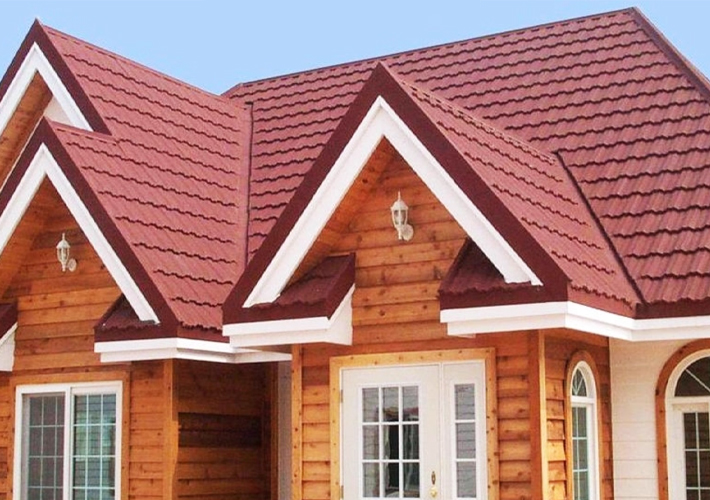
Conclusion
Stone-coated roof tiles represent a modern roofing solution that successfully combines durability, lightweight structure, beauty, energy efficiency, safety, and sustainability. Their wide range of application scenarios—from residential homes to commercial, public, and even historical buildings—demonstrates their versatility and value.
While the upfront investment may be higher compared to traditional roofing, the long-term benefits, low maintenance, and high return on investment make stone-coated roof tiles a superior choice for modern construction projects. As global demand for eco-friendly, durable, and aesthetically pleasing building materials continues to grow, stone-coated roof tiles will undoubtedly play a more important role in the roofing industry.

